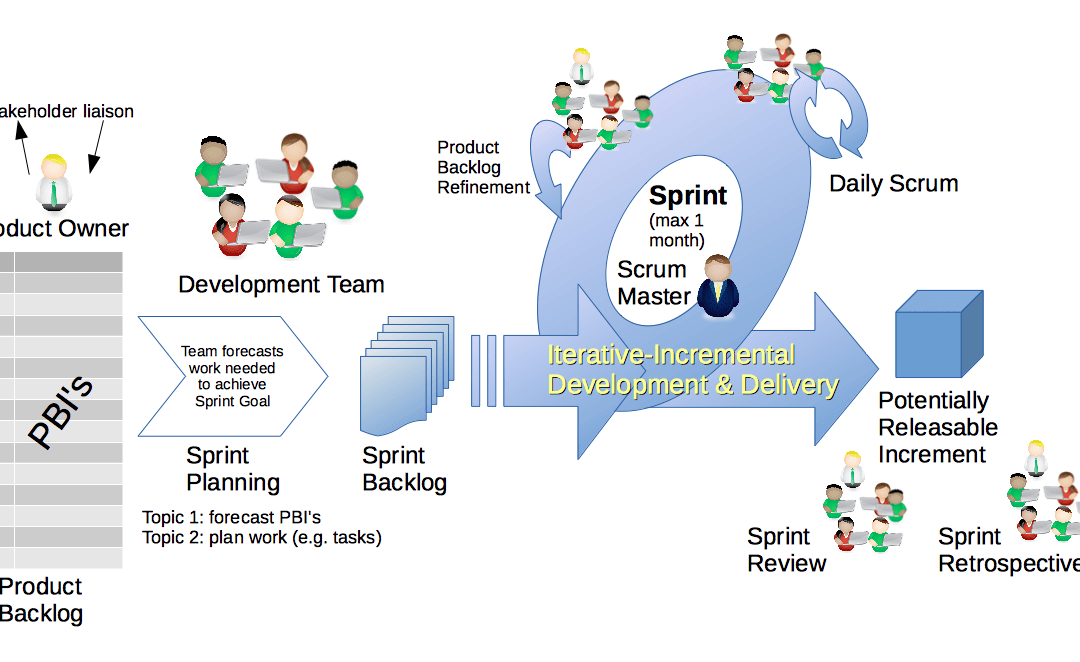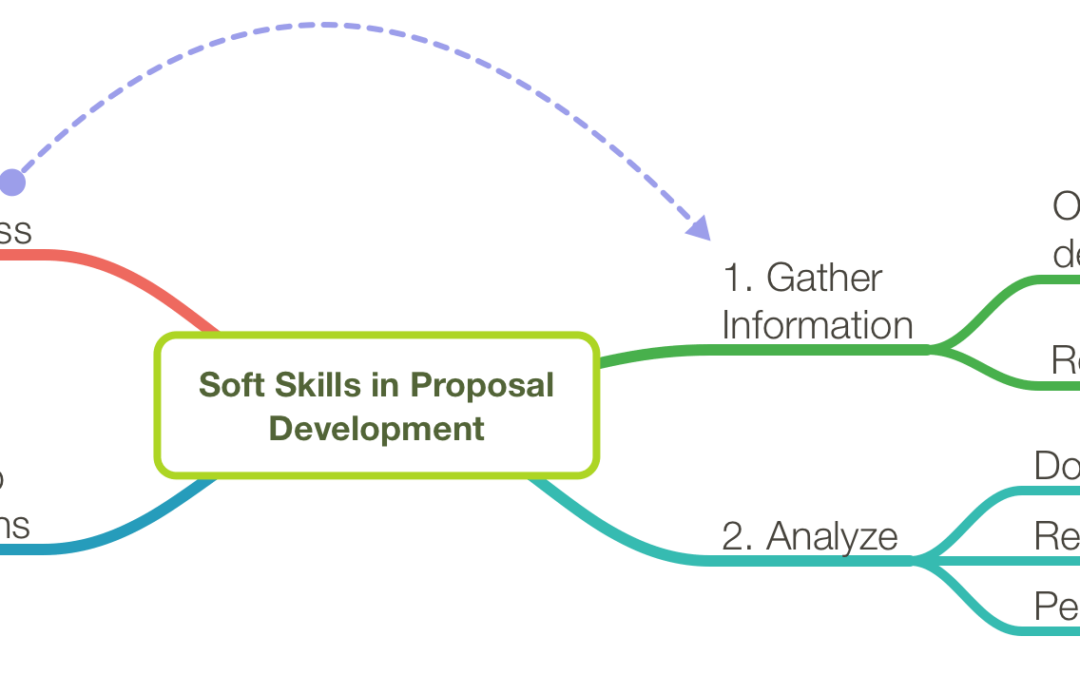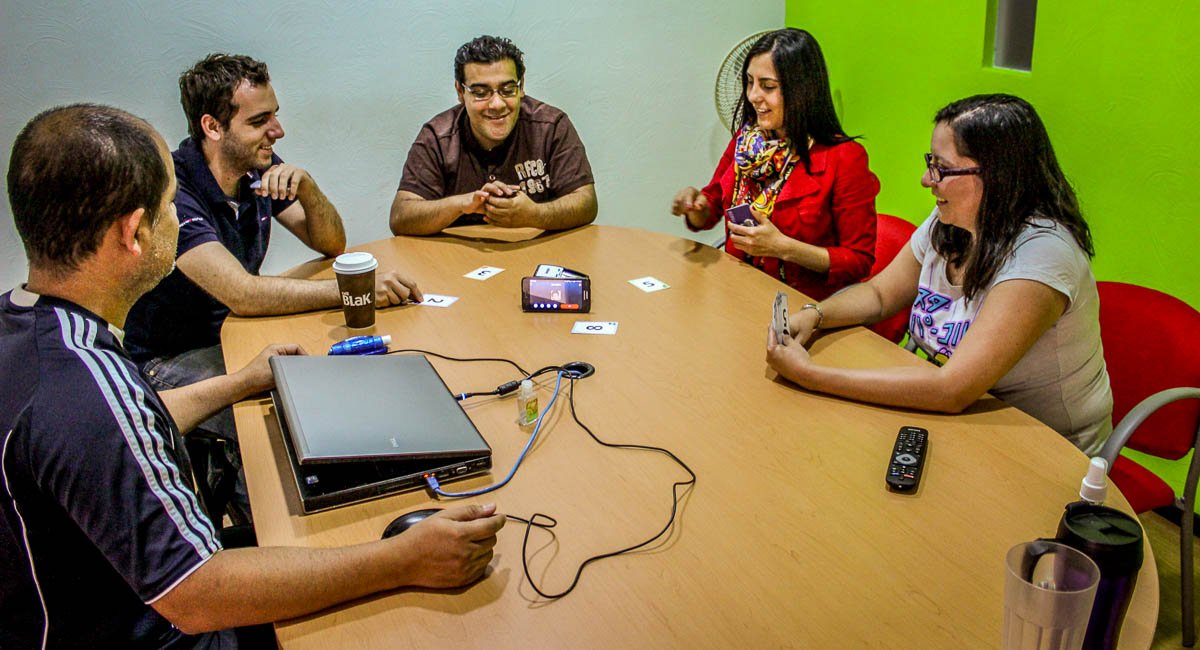
Agile Methodology, Customer Experience, Nearshore, Product Development, Project Management
Practices required for distributed teams: Basically Agile (and Scrum!)
The use of the agile methodology in combination with the Scrum framework is a widely accepted industry standard for software development throughout the world. Together the methodologies provide an iterative and collaborative system that has been proven to be adaptable and resilient over a wide range of implementations by teams in the industry.
What makes the combination of these methodologies so attractive and useful in the development of software?
- An adaptable framework for iterative software development that provides the customer working software for evaluation in regular, short increments.
- The ability to deal with incomplete or fluctuating product development concepts during the process of development in a way that allows discovery and adjustment as needed.
- The project team includes formal roles and responsibilities for both the client, development team and each individual in decision making during the development process.
- The inclusion of systems for communication, trust, and collaboration across the entire product development team.
- Recognition that the availability of team members for consultation during core working hours is critical to the iterative production process to assure alignment and to allow adjustment as needed.
- The production process includes regular daily meetings, as well as meetings for production assessment and planning that are focused on understanding the status of committed work, clearing production obstacles, and making adjustments where necessary to achieve goals the team has committed to accomplish.
- Outcomes that have proven to be beneficial to both the client and the development team in the development of successful software applications.

Of course, if you dig into the implementation details of agile and scrum for software development, you will find a number of additional benefits. Each team and project can and does adapt the processes within the framework to fit the constraints of their situation. But with the focus on real-time collaboration and face-to-face interaction, what happens when circumstances combine to require the use of agile and scrum across a team that is distributed across geography? Can the agile-scrum framework be adapted to a distributed team? That is the focus of this five-part series – Best Practices for Distributed Agile Teams.
Adapting Agile & Scrum to a Distributed Team
With the availability of broadband network access across the Internet, as well as the benefits and pressures provided by a global marketplace and workforce – it is critical that the benefits of the agile – scrum framework can be both adapted and scaled to provide their benefits to distributed teams. For the purposes of this series, we will consider any team that has members who are not physically in the same location during core working hours, they are distributed. That could mean the team is spread across a metropolitan area where colocation is both time-consuming and expensive or the team is spread across a wider area – across states or national borders.
The business advantages of opening horizons for software development by distributed teams are relatively obvious:
- A distributed model brings a wider field of skills and expertise into play, often with lower costs.
- Varied experience in both technology and problem-solving can bring more answers to the table with a lower cost of recruitment and faster fulfillment of specialized requirements
- Entire teams can be sourced with less time, training and deeper experience in leveraging agile-scrum for software and product development.
The scenarios for distributed development can include:
- Development team together in a development center with
- Client in a different location, same time zone
- Client in different location and time zone
- Split development team
- The development team is split between locations or combined with a client team in another location or both
- Same time zones or different time zones
- Various combinations – split client team, outside consultants, single team members remotely located
Continuity is Key
Regardless of where the client is, adaption to a distributed agile – scrum model is critical to ensure the involvement of key stakeholders, development and product teams and to achieve the benefits of the framework in projects. In fact, at Scio, we have found that consideration and inclusion of the practices required for distributed teams are critical to all our software development projects – whether they are considered to be «distributed» or not. We have found:
- Using the practices required for distributed teams provides a more scalable base for all software development teams.
- If distributed team practices are not in the standard agile repertoire:
- New projects that require a distributed team have a longer ramp to productivity because team members have to adapt to new tools and practices.
- Projects face a higher risk because situational adaptions selected by teams may not be proven and optimal.
- Teams may have to spend many cycles dealing with organizational issues to reach full productivity.
So, from our experience – adaptations of the agile-scrum methodology and framework to allow a distributed team environment is just good practice. They bring many benefits, including better communication, formalized technical environments, and organizational adaptions. They are a critical part of our work environment and our commitment to our clients.
During the following four parts of this series, we will explore some of the best practices Scio has found to be beneficial for distributed teams and some of the myths that we find are common when the idea is considered by organizations. We hope you will stay with us because there is a lot to know about leveraging a distributed team environment successfully for software development.

Customer Experience, Featured, Outsourced Engineering Team, Product Development, Project Management
Background
Before we discuss this subject – let’s reach a common understanding of what we mean by Soft Skills for Software Development Teams. Developing custom software requires a clear understanding of what the client needs to accomplish with the finished product. If you work in application development, you are aware that often this is a subject the client is not fully settled on when development begins, even if they have planned extensively. In fact, if the client believes they have all the bases covered in their application requirements, it is wise to be very careful and ensure they have the ability to be flexible at both a product and contract level. We all know that things will change as the product is realized and new opportunities present themselves. We also know that unexpected issues will come up during the project and the longer and more complex the project – the higher the risk will be. What we don’t know is how much change the project will need to be successful as envisioned and if that will be acceptable to the client. Realizing a product successfully requires that everyone on the development team is able to see more than the task that is in front of them and is enabled, personally and professionally, to help shape the outcomes. Without that, they are just following specifications in detail, not contributing their experience and insight fully and that can mean that things will go off the rails before anyone can pull them back. For developers to effectively provide the insight and experience they have to the project – they need to be able to use a range of soft skills.
On the other hand, no one can expect all or even some software developers to be business consultants, but in most cases, the same skills we expect our business consultants to have, can make all the difference when they are applied to the project from within the development team.
At a high level – what are these skills? Communication, negotiation, problem solving (creativity), and strategic thinking, but – within the context of the development team and its role in the project. There is a larger, more specific view of soft skills, but we will get to that later.

Scio Development Center, Morelia, Mexico
The team context is critical. If the development team cannot come together to support a concept or conclusion that could be advantageous to the project, it has a near zero chance of moving forward, no matter how valuable it may be. This doesn’t discount the visionary individual who sees the opportunity for change, it simply means that before the idea can move forward – the individual needs to exercise their soft skills to bring their team on board as a first step. And if the team does not feel enabled to exercise their creativity and insight, their soft skills for the concept, it will never happen.
Another common misconception is that roles like Project Manager and operations like communication are in themselves soft skills. Both areas benefit from soft skills greatly, but being a good project manager has more to do with how the role is defined than anything else. In larger teams, where the project manager is more of an administrator and deliverable coordinator, more of the work is defined by procedures, checklists, and project plan maintenance than soft skills, although certainly if the plans go wrong, negotiation becomes key. In these larger scenarios, communication also becomes bound up in processes and notification cycles that are often automated, if not run by assistants and procedures. In smaller agile teams, like we use at Scio for agile software development, soft skills are always important because there are fewer intermediaries and roles between the client and the development team. In general, while procedures certainly exist, they are more flexible and can be changed to fit the context of the project quickly. In these situations, there is little to no buffer between the development team and the key stakeholders on the client team. The better the members of the team are at leveraging soft skills, the better off the whole project will be. Smaller teams have to be creative, able to communicate their ideas and support them with analysis and strategy, and finally negotiate a path to a better outcome.
Is there a process under it all?
There is a process that ties together all soft skills that – when it is done right – makes all the difference. It is the process a team or individual uses to arrive at a conclusion for presentation, negotiation, and hopefully, acceptance. It is basically the same system a business analyst uses to present findings, but it needs to rely more on arriving at the conclusion as something everyone in the team can agree to and support. I bring this up because although all soft skills can be used by themselves, it is easier to see the value if you put them in the context of developing a proposal for a change in a project.

Considering the steps
- Gather Information
- Open, contextual questions delivered with empathy. As you gather information, conversations and the questions in them need to be developed within the context of the organization and with an understanding (empathy) for the people you are talking to. The communication soft skill of developing questions to gather information and delivering them with empathy has considerable value and too often ignored. Not using it properly results in few useful answers («yes» and «no» answers don’t give you any context) and little understanding of underlying drivers.
- Research – Of course, the skill of analyzing sources is critical, but so is using the team and peers as resources in research. They will bring different points of view and experience that can be expose additional lines of discussion.
- Analyze
- Document Scenario – Analysis must be based on the scenario under consideration and it must be documented clearly and agreed on by the team.
- Record Analysis – The analysis, under the scenario, needs to be referenced to the research and interviews
- Team Inclusion – Again, the team and any peers consulted need to be pulled into the analysis through review and discussion to ensure they understand what was considered before the conclusions were reached
- Develop Conclusions
- Attach to research and analysis – by the time you reach the conclusions, you should be able to draw clear lines between the research, the analysis and the proposed conclusion. Referencing back to those areas is key to achieving a collaborative conclusion.
- Team Inclusion – Of course, if the team is going to support the proposal, they have to understand the conclusions and how they were reached.
- Reassess
- Record Current Context – Document the current scenario and how it has changed.
- Cycle Back through the steps and document, changing as needed and adding new conclusions.
The process of developing proposals will use all the general skills above and if we get more granular, some more as well. Ultimately, they are the skills teams need to be successful and clients need to make decisions and gain confidence in their development team. But, the development team should not wait until the problem that needs to be solved is so big that it takes days and reams of paper to present. At that point, it is too late for the team to intervene because of project timelines and pressures. If problems are recognized early and conclusions are well-documented, they should be able to be presented in a short PowerPoint presentation. That is a much more realistic target for a development team if they can leverage their soft skills effectively.
A more comprehensive list of soft skills for Software Development Teams?
We’re not going to go into detail with the list we use of soft skills for our team training – but it is a good look at what we find useful to bring development team members to a level that improves their ability to add value to a project from their experience and insight:
–Thought Skills
- Associative Thinking (Connect the Dots)
- Analytical Participation
- Effective Questioning & Participation
–Team Skills
- Cultural Integration
- Collaboration & Coordination
- Key Stakeholder(s) Identification, expectations, Concerns
- Teamwork & Success (also a personal skill)
–Personal Skills
- Time Management (also a team skill)
- Always Learning, Improving
- Self-Confidence, Interpersonal Skills
These areas, laid against the normal team analysis, project management and delivery skills required for software development, bring a better experience for clients and higher job satisfaction for our team members. But with that understanding of the «why» behind a focus on soft skill development, the biggest barriers must also be understood:
- Soft skills do not come easily, especially in the areas of communication, collaboration and negotiation. Everyone must practice, fail, reassess, and continue the cycle to improve self-confidence and the interpersonal skills that are so important.
- Soft skills take time to develop and in the end, have to come from hands-on experience. One class, one try, does not suffice for training. The ball needs to be passed around so that everyone can get time to gain the confidence necessary. It is like driving a car – you cannot watch a series of videos on Youtube and expect to drive a car properly. You need to get into an actual car and feel what happens as you are moving along to learn and grow.
How can you get value out of soft skills?
As a software developer, can you remember situations where you saw a solution to a problem that you couldn’t properly communicate to your team or client? If you have any experience, you have. Taking some time to research, experiment, make mistakes, ask someone to mentor you in soft skills, can make all the difference. If you have mastered some soft skills, mentor others by doing – don’t wait for them to ask.
As a client, look for ways to support your team and enable them to leverage their soft skills. There is no question we are all made smarter by working together and it lowers the burden on you and your team. You can’t expect all ideas from y0ur development team to be acceptable – but the richness possible from an inclusive, collaborative environment can increase your chances of success and decrease your risk considerably.
As we move forward to achieve better outcomes and a more positive customer experience – custom software development must continue to look for opportunities to lower risk and achieve better outcomes. Development teams can act more as partners in product development and success and less as commodity labor. It is a vision we need to continue to work on – and realize – one person, one team, one project at a time.

Agile Methodology
It has always been said that the kind of members you take in your team determines the success rate of a project. This is true for software developers, especially because completing a project takes a lot of time, money, and energy.
The Agile Manifesto started in 2001. It addressed the growing problem of software development where the process of creating and building projects took years, or worse, were left unfinished.
Before the agile software development methodology came about, software projects have been delayed or have cost more than its budget. During that time, meeting the client’s requirements was really difficult. Software development teams then were using the traditional Waterfall methodology to manage their projects and keep track of their progress. However, this methodology has flaws that made it harder for software engineers to finish their projects.
Agile has made it easier and more convenient for both the developers and clients. It works like a software development life cycle, following phases where developers manage each phase. It allows each stage to be altered, adjusted, or enhanced.
The cycle goes from system planning, requirement analysis, designing, and coding to the last phase of system testing. Since the project goes through these phases, it is important that members of an agile team work closely and collaboratively with one another. But what really makes a great Agile software development team?
Good Communication and coordination
Because agile methodology requires each member of the team to work on each phase of the cycle, good communication must be practiced all throughout the software development process. A great and successful agile team is able to share and contribute ideas with each other. It is also important that everyone is able to express themselves very well, such as when encountering a problem, asking for help or assistance, or taking the initiative to share new ideas or suggestions. Communication is vital in the process because everyone in the team needs to know the progress of the project at every stage. Good communication results in a well-coordinated project.
Leadership
This does not only apply to the team leaders or managers but also to everyone who is part of the team. Members lead and take responsibility in each of the project phases. The project will not be completed unless it has gone through the necessary stages, so this also means that it will not be completed if one member does not do their part.
Moreover, an agile team has proper organization and a balanced distribution of tasks. This helps make the transition of the project from one phase to another faster and smoother. Agile team members should know and understand their roles in the project to be able to perform their tasks and provide what is needed of them. It is also important that members know their strengths and weaknesses, so they can work on them together.
Empowerment
One important factor in agile development is the empowerment and autonomy given to each team member. People can achieve their goals because they are motivated properly and because they can freely explore and develop their skills.
Since agile development allows transparency and collaboration, agile teams also work based on trust. They have to trust one another because they need each other to complete the project. This trust can be expressed through consistent empowerment. Everyone in the team must consistently allow each member to work and own their parts, roles, and responsibilities. This soon leads to providing mutual support to one another and to assisting those who are having a hard time.
Dedication and Unity

All tasks require dedication, especially when bringing a software project to completion. This means that members of the agile team are hardworking and do not give up easily on the project. They have vision not only for themselves but for the team and the project as well. They are willing to adapt to different people and different situations, and they are open to growth and improvement.
Dedication also means working as a group where the success of one is the success of all. Members work together towards one goal and one objective.
Conclusion
Successful software development projects are often created by groups of individuals who dedicate their time and energy to solving and improving the features of the program that they are working on.
Great Agile Software Development Teams play a major role in the success or failure of software development projects. Although the team leader makes the most important contributions, it should be noted that everyone in the team is responsible for the completion of specific parts of the project, making it whole. With that, picking the right team members is something that should be taken seriously.
If you want to work with a great agile team that will ensure the successful completion of your project, visit Contact Us for more information. We can help!
Now we just want to ask you, if you can share this blog post on your social networks to reach people who might need or are looking for our help. It is very simple, just click on any of the buttons below. Thank you!

Customer Experience, Nearshore, Outsourced Engineering Team, Product Development, Project Management, Technologies
Every business, big or small, has a great number of activity going on at all times and has a lot of things that they need to keep track of. This is why businesses ranging anywhere from a large chain to a singular freelancer can benefit greatly from a business management software. A business management software is a software or set of programs that has the ability to perform certain business operations as well as the ability to measure and increase productivity. When you are first starting out you may be trying to keep it all in a spreadsheet or, if you’re a freelancer, you may just try to keep it all in your head. As good an idea as this may sound at first, it will likely end up in chaos and your business will suffer for it.
Why Business Management Software is so important!
 One of the biggest reasons that you will need a business management software in place is the previously mentioned measurement of productivity. When you are beginning a new business endeavor it is crucial that every employee or component of the business be working at optimal productivity. If your employees or you yourself are taking the time to do the tedious tasks that the software can do, you will be wasting precious time that could be applied to more important tasks. By using the software in place of manual labor, you will free up a lot of time to spend on customers and building your business!
One of the biggest reasons that you will need a business management software in place is the previously mentioned measurement of productivity. When you are beginning a new business endeavor it is crucial that every employee or component of the business be working at optimal productivity. If your employees or you yourself are taking the time to do the tedious tasks that the software can do, you will be wasting precious time that could be applied to more important tasks. By using the software in place of manual labor, you will free up a lot of time to spend on customers and building your business!
This software will also help employers and business owners to see what their employees are doing with the ease of just a few clicks. This is through the calendar that makes it possible for employees to check in. You can also assign a project to any given employee and track it through this same software. This means that you won’t have to chase down the project leaders to find out the status of a project!
You can also save important documents through this software. Because it can bog up computers when you have all of the documents saved on your hard drive you have limited options. One option is to have external hard drives. However, it can take a while to go through multiple external hard drives when you are looking for a specific document. This is where a business management software comes in handy. Once documents are created they can be automatically saved into the software and they will be in arm’s reach whenever you need them!
How to choose a Software Solution?
 Overall, there are multiple ways that a business management software can help your business to grow and succeed. They can be a pricey software but they are definitely worth it if you find the right one. A good idea would be to choose one that has a free trial and allows you to take any data with you when you leave if you decide not to proceed with them. This will allow you to make an educated decision on what you want in your management software. Having this software in place is definitely something that you should do as early as possible to get optimal use out of it.
Overall, there are multiple ways that a business management software can help your business to grow and succeed. They can be a pricey software but they are definitely worth it if you find the right one. A good idea would be to choose one that has a free trial and allows you to take any data with you when you leave if you decide not to proceed with them. This will allow you to make an educated decision on what you want in your management software. Having this software in place is definitely something that you should do as early as possible to get optimal use out of it.
An even better choice is to invest in a custom business management software because that means that it will be tailor made for your specific needs and wants. This will make it even more helpful for you and your business. When you’re thinking about your business, you will want to get the best software possible and that is custom software in most cases!










